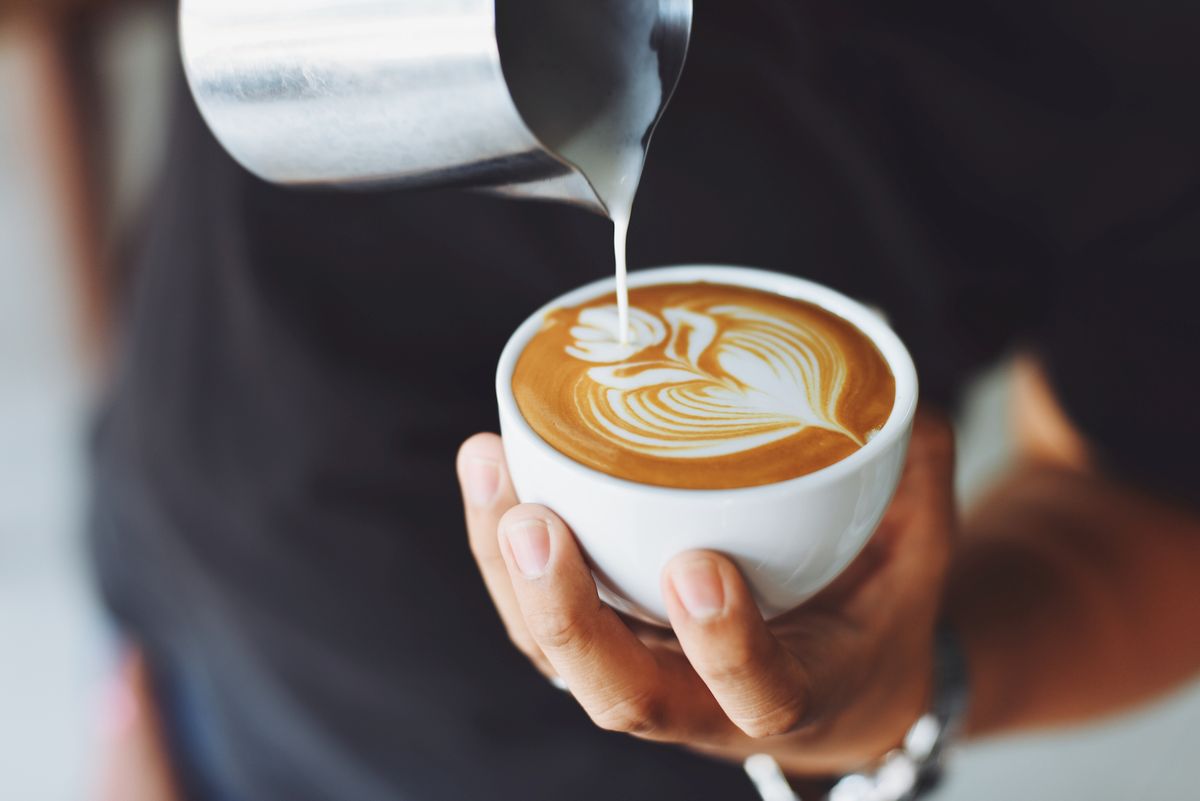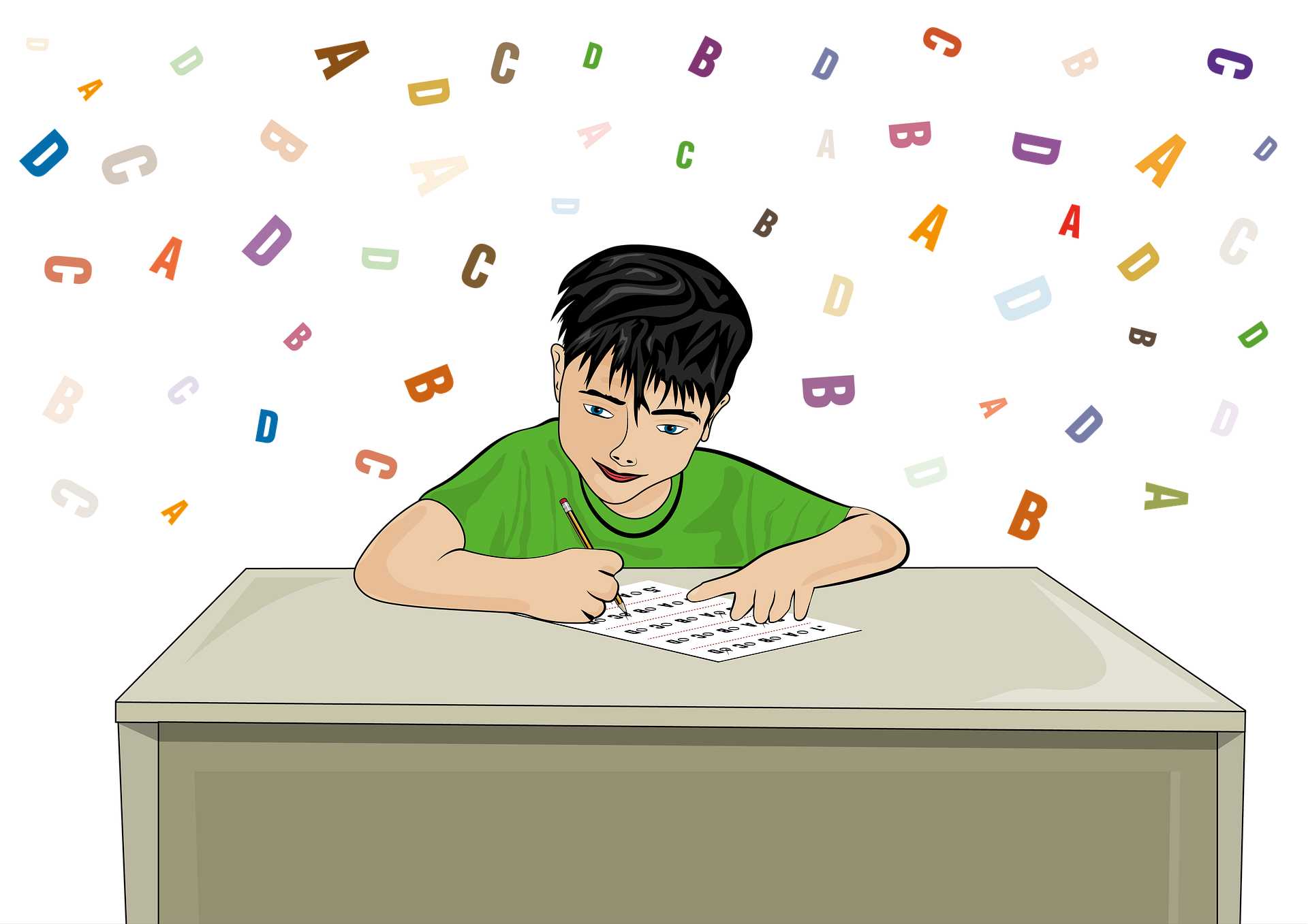There are many different types of espresso drinks. In this blog post, we will discuss the two most common espresso drinks: plain espresso, and milk with espresso. Each type of drink has its own unique set of flavors and textures that make it a pleasure to drink. We will also provide a brief description of each type of drink so that you can decide which one is right for you! This article has an overview of the espresso drink recipes, but we have hyperlinks to the detailed recipes if you want to make your own coffee drinks at home.

Espresso Preparation
Espresso is made with a pump-driven espresso machine that can create 9 bars of pressure. Espresso alternatives could be used, but the flavors are not the same. These espresso alternatives include the Moka pot, (stovetop espresso) and the AeroPress. We will only talk about modern espresso, which is made with an espresso machine. If you would like to purchase your first ever coffee machine but do not want to splurge on something very pricey, taking a look at our Best Affordable Espresso Machines article will benefit you.
The special thing about espresso is the use of pressure for the extraction, and the fine grind size used. The finely ground coffee creates a rich and bold coffee, with coffee flavors that we cannot get with any other coffee brewing method.
For brewing an espresso, we finely grind coffee according to our recipe. We then transfer the grounds into the portafilter, and we tamp the grounds to compress them into a compact puck of coffee. The portafilter is then locked into the espresso machine brew head, then hot water is pushed under pressure through the coffee bed. For a comprehensive espresso brewing tutorial check our post: How To Make Espresso with a Pump Espresso Machine.
The extraction time represents the entire time that water passes through the coffee cake, leeching soluble solids from the coffee grounds. The ideal extraction time is between 20 and 25 seconds, with slight variations.
A single shot of espresso is made with 7 grams of coffee, a double shot espresso is made with 14 grams of grounds, and a triple shot of espresso is made with 20-21 grams of espresso. These are the recipes for the normal espresso shot. To perfect your espresso crafting technique, you might want to take a look at our article about Pulling The Perfect Espresso Shot.
Most Popular Espresso Drinks

Plain Espresso Drinks – The Basics
Plain espresso is the most basic type of espresso drink. It is made up of a single shot of espresso that is served in a small espresso cup named demitasse. An espresso cup is about two to three fluid ounces in volume, which can hold one or two shots of espresso.
Single Shot Espresso – Normal Strength

The standard single espresso shot is called “solo normale”. Which means a single shot, normal strength. This means a very strong concentrated coffee, compared to other coffee drinks. We’ll explain all other plain espresso variants in a bit.
This solo normale is perfect for coffee purists who want to enjoy the pure flavor of espresso without any added flavors or textures. It is the coffee choice in Italy. If you ever heard about drinking your espresso fast, this is the beverage that can be downed in a single sip.
The neat espresso comes in many variants, depending on your preference. However, any espresso beverage should be extracted for 20 to 25 seconds for an optimal flavor balance. The barista will change the other brew variables in order to create variants that appeal to their customers. Here are the most popular plain espresso drinks.
The traditional solo is prepared with 7-9 grams of coffee grounds, and it results in a 1 fluid ounce beverage, (30 ml).
Doppio – Double Shot Espresso
A doppio espresso is simply two shots of espresso combined into one drink. This variant is popular among those who want to enjoy a stronger espresso flavor in their drink.
The double espresso is prepared with 14-18 grams of coffee grounds, depending on the basket manufacturer, and it produces a 2 fluid ounce drink, (60 ml).
Triplo – Triple Shot Espresso
A triple espresso is three shots of espresso combined into one drink. This variant is popular among those who want to enjoy an extremely strong espresso flavor in their drink. It is often used in milky drinks, where we need more coffee flavor.
A triple shot of espresso is made using a triple basket, a larger filter-basket, that can hold 21-27 grams of grounds. The result is a 3 ounce espresso, (about 90 ml).
Ristretto
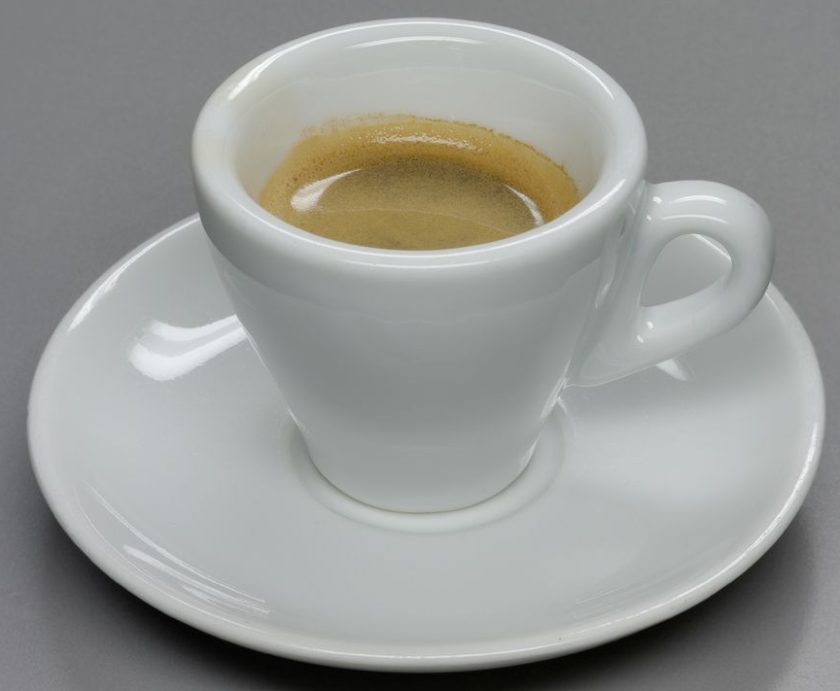
Ristretto is an espresso drink that is pulled short. The barista will grind the coffee finer than for a normale, which will restrict the shot flow. This results in a more concentrated espresso that has a slightly different flavor profile than a traditional espresso. Ristrettos are less bitter than normal espresso. Triple shot ristrettos are a great choice as the coffee base for lattes.
Americano
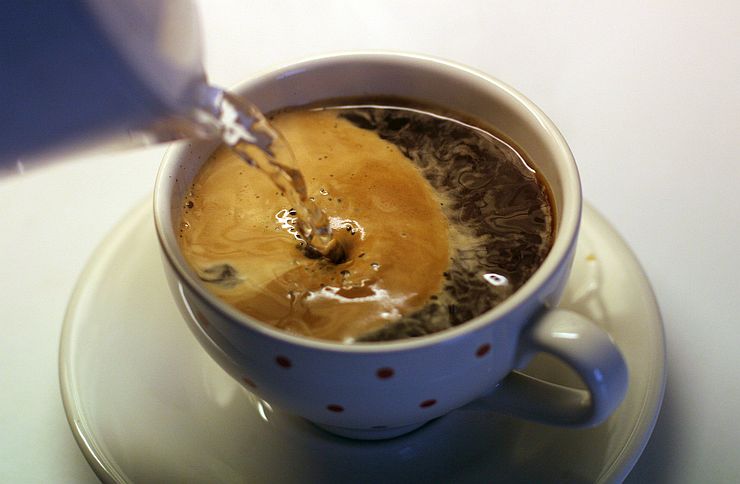
Americano is espresso diluted with hot water to create a coffee drink that is similar to drip coffee. This variant is popular among those who want the espresso flavor but don’t want a super-concentrated drink. Caffe Americano is thought to have been born in Italy, when American soldiers ordered an espresso and hot water so they can dilute the strong drink into a familiar strength beverage.
Long Black
The long black is an espresso shot pulled over hot water. This variant is very similar to Americano, but for an Americano the water is added after the espresso was brewed, whereas for a long black we pour the hot water first, then we pull the shot over the water. This results in a prettier cup, with more crema.
Espresso Lungo
The espresso lungo is made by modifying the brew variables so that the espresso shot is more watery and creates a longer and more mellow drink. This drink is different from long black and Americano because all of the water gets passed through the grinds extracting soluble solids from the coffee. To achieve this, the barista will grind coarser so that the shot is less restricted and allow more water to pass in the 25 seconds of brew time.
There are brewing variants where the grind size is the same, but the extraction time is extended.
Caffè Crema
Caffe crema is a longer espresso drink, roughly the volume of an Americano. The difference is that a caffè crema is prepared the same way as a lungo, but with a coarser grind, so that we can get a more diluted coffee without adding water at the end. Caffè crema is the perfect approximation of a drip coffee, while having the great espresso flavors. You won’t find this drink on the typical American coffee shop, since the brewing variables are quite different to an espresso, and it is very complicated to change them.
Red Eye
The red eye coffee is an espresso shot combined with a cup of brewed coffee. This drink gets its name from the fact that it’s like drinking espresso with “red eyes”, or having caffeine overload. Beyond the caffeine amount, red eye is perfect for those who want the terroir flavors preserved, but they love a strong coffee. To expand your knowledge about caffeine amounts in espresso beverages take a look at our How Much Caffeine Is In Espresso article.
Milk Espresso Drinks – Adding Milk Changes Everything
You can make any coffee milk in a coffee shop, as long as you have espresso and milk.
All of these coffee recipes… you would think that there is a variety of ingredients. Almost all coffee drinks in a coffee shop menu have two components: espresso and milk.
So ho do we have such a diversity of drinks, and how come they taste so different? We change two things, (mainly), the amount of milk that is used and the quantity of air injected into the milk.
The amount of milk changes the taste of the beverage, and the amount of air changes the texture. It is amazing how much a coffee drink can be changed by just injecting some air. Some of these differences are visual. For instance, in some coffee recipes using heavy cream, or condensed milk will allow the creation of layered drinks. The ingredients will stay separated in layers, and if served in glass cups, create a beautiful visual effect.
At the end of the day, these drinks are formulated from the viewpoint of individual baristas and owners of shops. Sometimes it’s just a marketing tactic, so they keep customers “connected”, so they don’t get bored.
The milk used in coffee recipes can be any milk. The best is whole milk because when steamed it gets a velvety structure, and it’s creamier. Modern automatic espresso machines are better at steaming/frothing milk, so vegetable and nut milks are offered in the coffee shop menu. They add a nuttier flavor to the beverage and they are a great option for those with lactose intolerance.
Latte
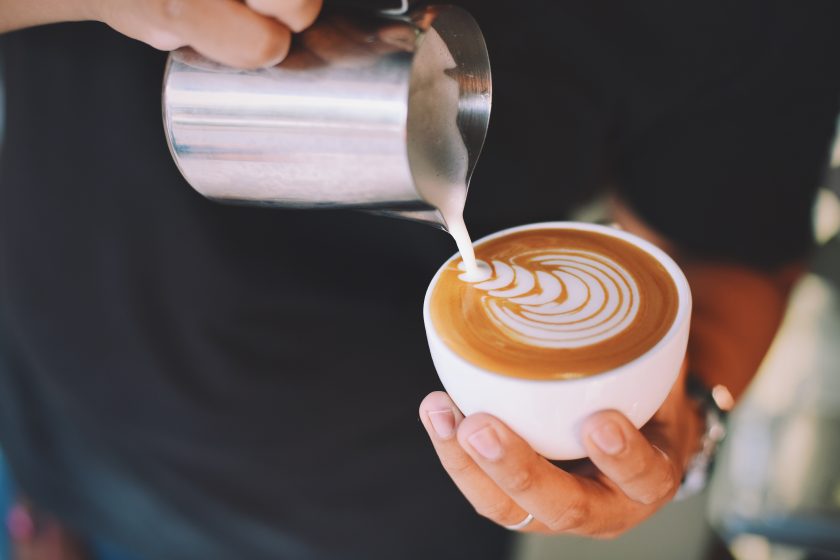
A latte is an espresso drink made with steamed milk, espresso, and a small amount of foamed milk. The full name of the drink is caffé latte and is one of the most popular drinks along with cappuccino and flat white. A traditional caffé latte recipe calls for 1 part espresso and five parts steamed milk. Lattes are more diluted than most other coffee beverages. They are very popular because baristas can use textured milk to create beautiful designs on the top of the drink, increasing the aesthetic appeal.
Latte Macchiato

A latte macchiato is identical to a regular caffé latte except it has a greater amount of milk foam on top. This also means that the barista cannot create latte art with the textured milk, but they can use stencils and cocoa powder, or chocolate syrup to beautify the drink.
Iced Latte

An iced latte is simply a latte with ice cubes. Certain variants use iced coffee cubes and iced milk, so the drink doesn’t get diluted. Iced lattes are sometimes prepared with cold brew coffee, which has a milder, sweeter taste than iced espresso coffee.
Cappuccino
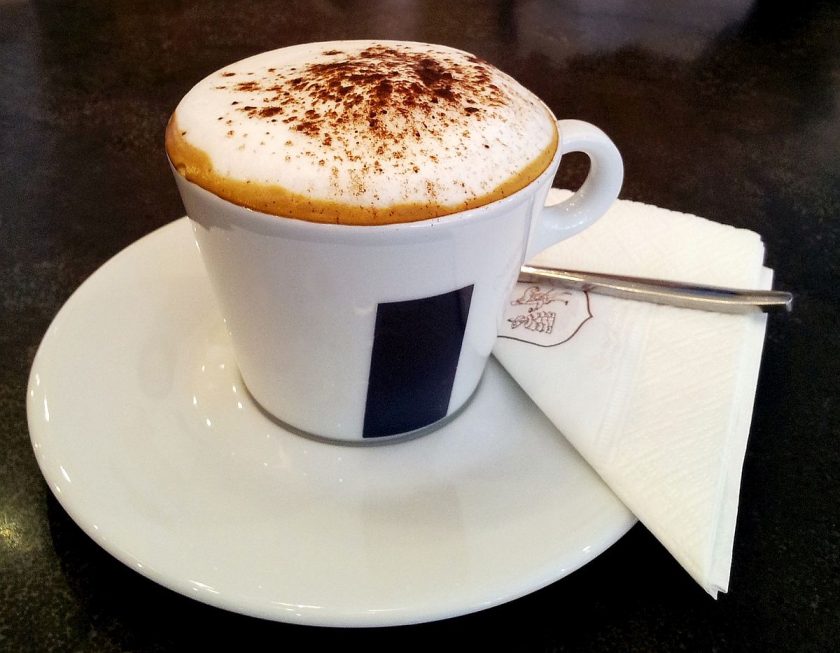
Cappuccino is a coffee drink made with espresso, steamed milk, and milk foam. The difference between a cappuccino and a latte is that the former has more frothed milk. The recipe is 1 part espresso, 1 part steamed milk, and 1 part frothed milk. This makes a stronger coffee beverage, with more pronounced coffee flavors than a latte.
Frappuccino

Frappuccino is a frozen cappuccino. Typically, frappuccino is served sweetened, but it can be served without sugar as well.
Flat White

The flat white is espresso with micro foamed milk, which gives it a velvety texture. It was created in Australia and became popular in the UK and US. A flat white contains 1 part espresso, and two parts micro foamed milk. This espresso drink is less milky than a latte but more diluted than a cappuccino. You can create latte art just as you would with a latte, but the beverage is about the size of a cappuccino.
Espresso Macchiato

A traditional espresso macchiato is made by adding a small amount of frothed milk on top o the espresso. Modernly, the espresso macchiato can also get a small amount of steamed milk to give the beverage texture and tone it down. The drink was initially called macchiato, but since the introduction of the latte macchiato, the name had to change to be more specific. In Italian, macchiato means stained or marked, suggesting the spot of milk on top.
Mocha

A mocha caffe is an espresso-based coffee flavored with chocolate. The recipe calls for 2/5 espresso, 2/5 hot chocolate, and 1/5 steamed milk. This is a strong beverage, less milky than most espresso and milk-based beverages, and it has a strong chocolate flavor. Some coffee shops use chocolate syrup, instead of hot chocolate, for a desert-like experience. Most patrons add sugar anyway to this drink.
Mocha Latte and Mochaccino

A mocha latte is a caffe latte with chocolate. The chocolate can be added as a syrup, hot chocolate, or even a few squares of chocolate added to a regular latte. In the same way, mochaccino is a cappuccino with added chocolate.
Espresso Con Panna

Espresso con Panna is a beverage made with espresso coffee topped with whipped cream. The recipe is simple: espresso and whipped cream, nothing else. This espresso drink is popular because it is a simple way to make espresso more palatable. The espresso flavor is masked by the cream, and it becomes a light and refreshing drink.
Espresso Romano
Espresso Romano is espresso with a lemon twist. A lemon slice is served along with the espresso shot, which then can be added to the espresso to give it a hint of acidity. Espresso purists claim that the acidity from the lemon is too much for the delicate flavors in espresso.
Dirty Chai
Dirty chai is a popular espresso drink that combines the benefits of coffee and tea. Typically, coffee and tea don’t mix into a palatable drink, but dirty chai is a great exception. A dirty chai beverage is a shot of espresso mixed into chai tea and steamed milk. The ratio of coffee to milk and tea is equal parts steamed milk and massala tea, and a double espresso shot. It’s usually made with a chai concentrate or tea, steamed milk, and a single shot of espresso, and the result is a cross between a regular latte and a chai tea latte. Dirty chai is also called dirty chai latte, but the dirty chai recipe contains milk.
Piccolo Latte

A piccolo latte is an espresso with a small amount of steamed milk. The drink gets its name from the Italian word for “small.” A piccolo latte is more known by the name piccolo, and is closer to a flat white and a cappuccino than to a latte. The ratio of milk to espresso in a piccolo is 2:1. More exactly you want one shout of espresso and two fluid ounces of steamed milk. This makes it less milkier than the classic latte, and the coffee flavors typically survive. Compared to the cappuccino, though, the milk texture is different. The milk texture is similar to a latte, silky, rather than foamy and dry, like in a cappuccino. Piccolo is most similar to a flat white, because they both use the same amount of milk and the same milk consistency. However, because flat whites use a double espresso shot versus the single espresso shot in a piccolo, the taste is quite different.
Cortado

A cortado is an espresso beverage with a small amount of steamed milk. The drink is espresso with a thicker layer of milk foam on top, similar to a cappuccino. The difference is that cortado uses the same amount of milk and espresso, hence is one of the strongest milk and espresso-based beverages. Some baristas use textured milk for making cortados, some use non-textured milk, which is the original recipe. A variant is cortado leche y leche, which is made with a layer of condensed milk at the bottom of the cup, a layer of espresso in the middle, and a layer of steamed milk on top. Leche means milk in Spanish, so the name hints at the two layers of milk.
Affogato
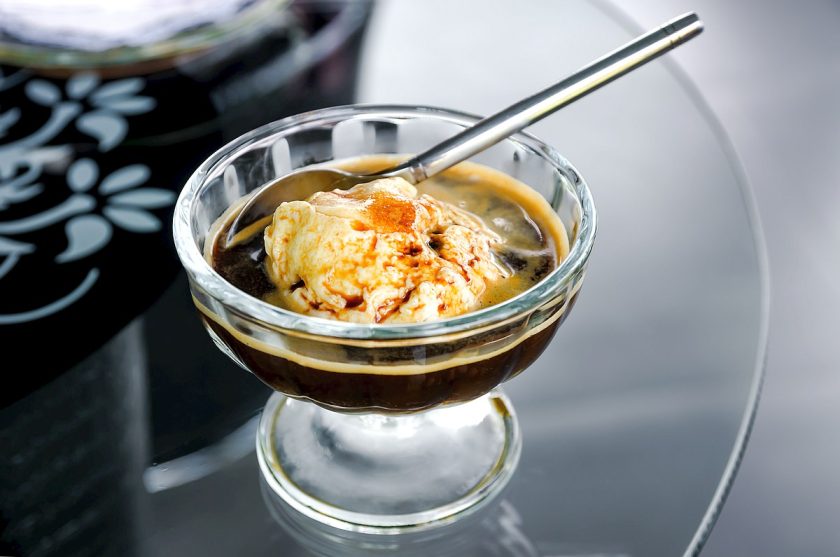
Affogato al caffè is an Italian espresso drink, considered by many a dessert, prepared by pouring a shot of freshly brewed hot espresso over a scoop of gelato, or ice cream. The result is a delicious, smooth drink. The Italian name of this coffee drink, or dessert, is affogato al caffè.
Often times affogato is confused by customers with espresso. While technically affogato contains an espresso shot, an affogato style espresso is probably more of a dessert than a coffee drink.
Why Do Espresso Drinks Taste so Different?
Same ingredients, and only small variations of the amount of milk, or the amount of air injected into the milk, yet the resulted drinks are so different.
Like in any other food preparation field, the quality of the ingredients has the most impact on the taste. For instance, a latte from a chain coffee shop tastes completely different than one from a local roaster. Coffee and milk quality play a major role in this.
The amount of milk is probably one of the most important factors. There are a few reasons why espresso and milk go so well together.
Milk contains water, sugars (lactose), protein, and fat. All these have their own role in balancing the taste of an espresso beverage.
- The water in the milk dilutes the strong flavors of the espresso.
- The lactose helps to balance the bitterness.
- This fat helps to minimize the sour tastes.
- The protein in milk helps with the texture, and it gives your coffee drink and extra dimension.
The fats in milk combine with coffee’s aromatic compounds. In turn, this will extend the taste time. A good coffee flavor will linger in your mouth for a few minutes after you finished it. A good cappuccino can linger for more than a half an hour.
On the other hand, coffee beverages with larger quantities of milk, will loose the coffee flavor. Espresso is too diluted and we can only guess what coffee is used.
Many coffee shops use ristretto espresso, as the coffee base for their beverages. Ristrettos are much better at cutting through the fats and sugars of the milk. However, the barista will need 2 shots of ristretto to replace 1 shot of normale. This means the cost of this beverage will be higher.
Maybe the most interesting aspect is the texture of the milk. You would think that adding air into the milk would not change its taste. But in reality the silkiness of steamed milk changes the flavor of the drink, nor only the texture.
